
FM 21-150 COMBATIVES 1992
.pdf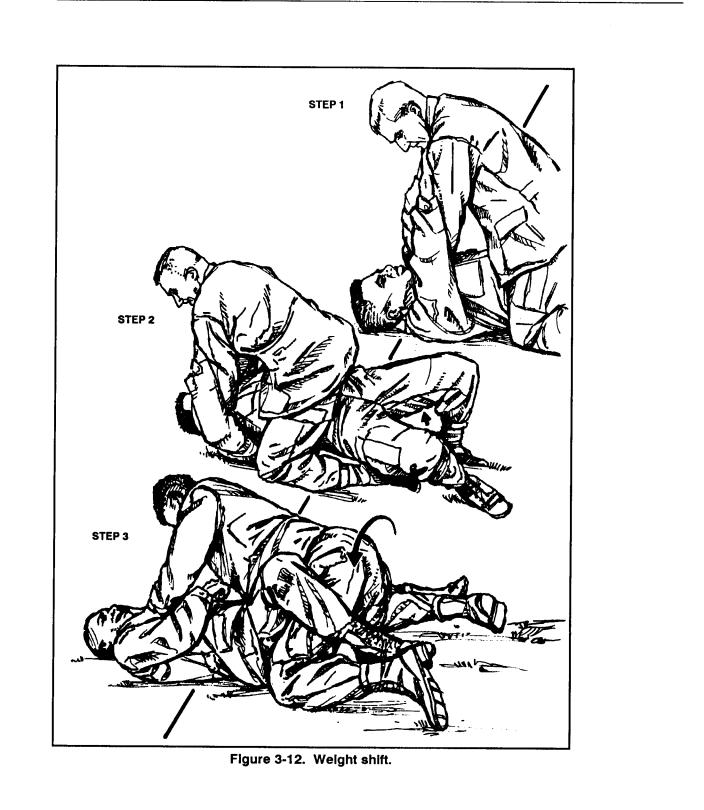
FM 21-150
3-17

FM 21-150
d. Counterstrikes to Rear Choke and Frontal Choke. As the opponent tries a rear choke (A,Figure 3-13, Step 1), the defender can break the opponent’s grip with a strong rear-elbow strike into the solar plexus
(A,Figure 3-13, Step 2).
He can follow with a shin scrape down along the opponent’s leg and stomp the foot (A, Figure 3-13, Step 3).
He may wish to continue by striking the groin of the opponent (A,Figure 3-13, Step 4).
As the opponent begins a frontal choke (B, Figure 3-13, Step 1), the defender turns his body and drops one arm between the opponent’s arms (B, Figure 3-13, Step 2).
He sinks his body weight and drives his own hand to the ground, and then explodes upward with an elbow strike (B, Figure 3-13, Step 3) into the opponent’s chin, stomach, or groin.
3-18
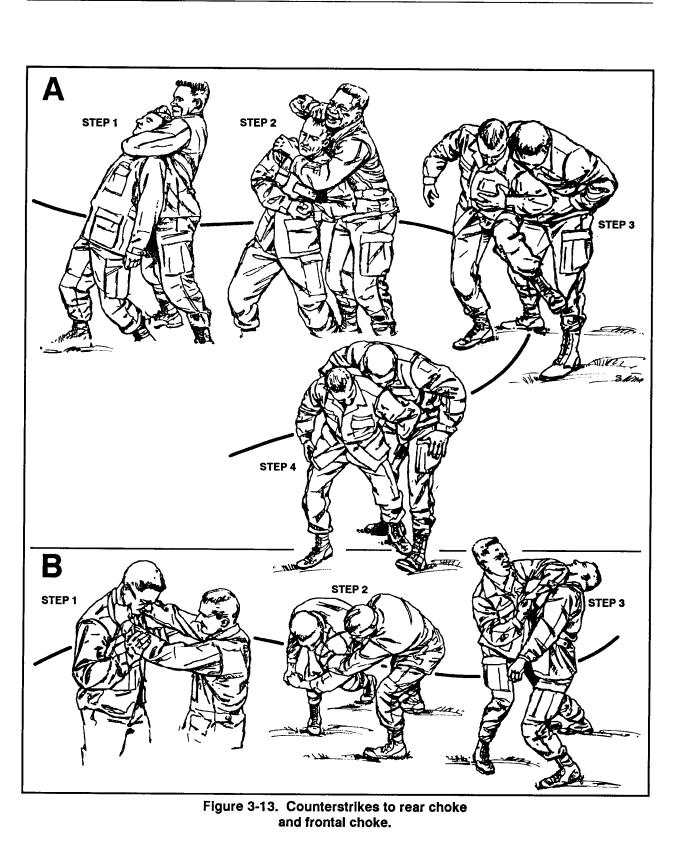
FM 21-150
3-19

FM 21-150
e. Headlock Escape. If a defender is in a headlock, he first turns his chin in toward his opponent’s body to prevent choking (Figure 3-14, Step 1).
Next, he slides one hand up along the opponent’s back, around to the face, and finds the sensitive nerve under the nose. He must avoid placing his fingers near his opponent’s mouth, or he will be bitten (Figure 3-14, Step 2).
The defender can now force his opponent back and then down across his own knee to the ground and maintain control by keeping pressure under the nose (Figure 3-14, Step 3). He can finish the technique with a hammer fist to the groin.
3-20
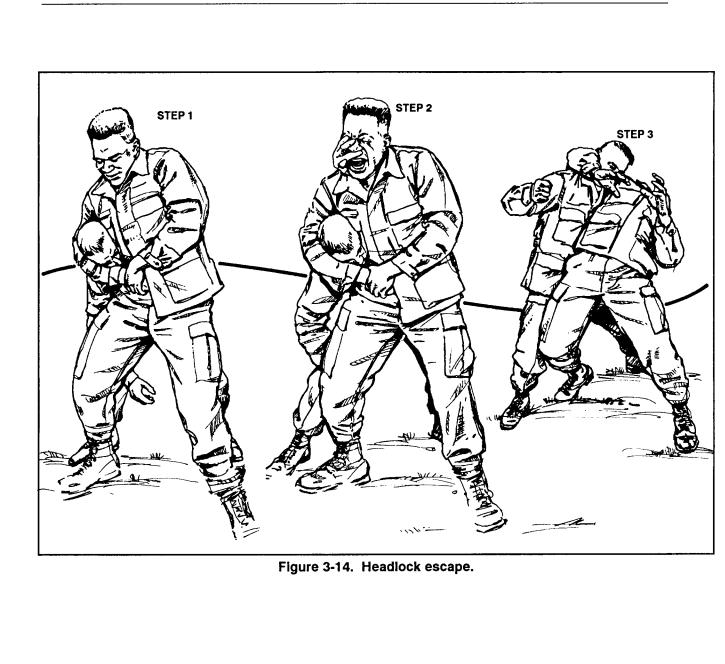
FM 21-150
3-21

FM 21-150
3-5. GRAPPLING
Grappling is when two or more fighters engage in close-range, hand-to-hand combat. They may be armed or unarmed. To win, the fighter must be aware of how to move his body to maintain the upper hand, and he must know the mechanical strengths and weaknesses of the human body. The situation becomes a struggle of strength pitted against strength unless the fighter can remain in control of his opponent by using skilled movements to gain an advantage in leverage and balance. Knowledge of the following basic movement techniques may give the fighter a way to apply and gain the advantage in grappling situations.
a. Wristlock From a Collar or Lapel Grab. When an opponent grabs the defender by the collar or by the lapel, the defender reaches up and grabs the opponent’s hand (to prevent him from withdrawing it) while stepping back to pull him off balance (Figure 3-15, Step 1).
The defender peels off the opponent’s grabbing hand by crushing his thumb and bending it back on itself toward the palm in a straight line (Figure 3-15, Step 2). To keep his grip on the opponent’s thumb, the defender keeps his hands close to his body where his control is strongest.
He then turns his body so that he has a wristlock on his opponent. The wristlock is produced by turning his wrist outward at a 45-degree angle and by bending it toward the elbow (Figure 3-15, Step 3). The opponent can be driven to the ground by putting his palm on the ground.
3-22
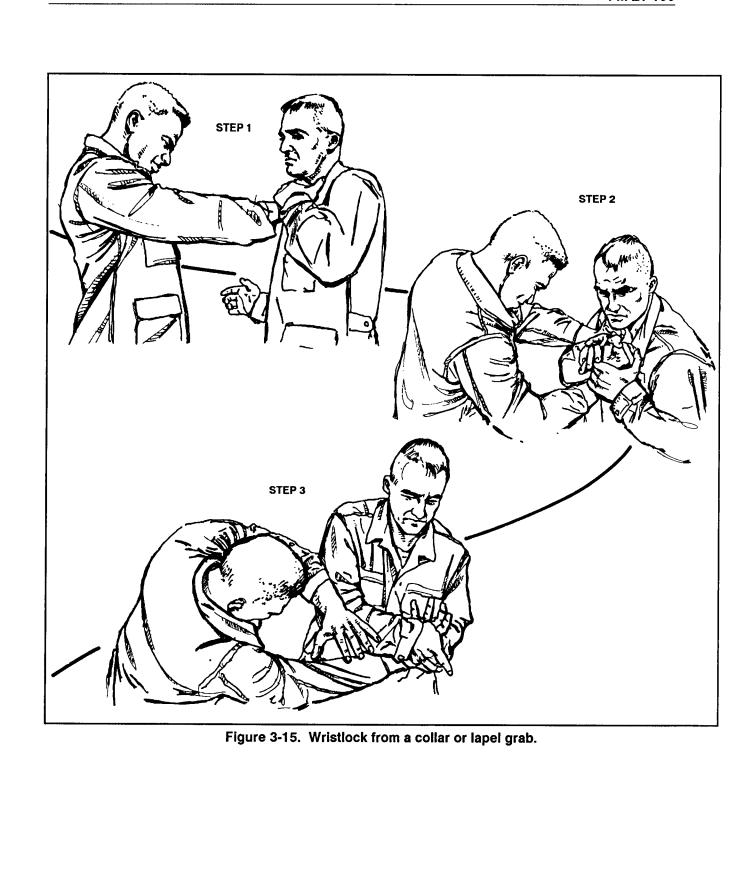
FM 21-150
3-23
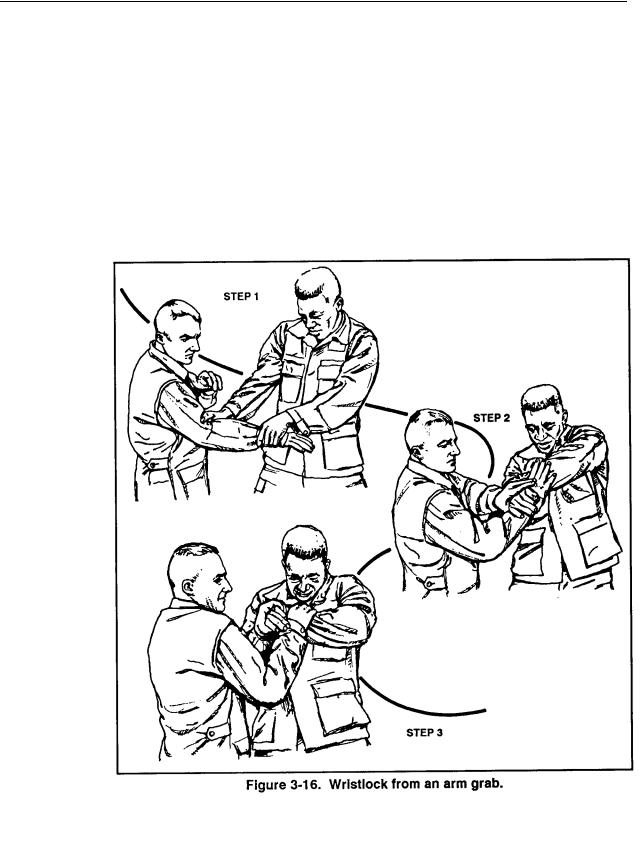
FM 21-150
b. Wristlock From an Arm Grab. When an opponent grabs a defender’s arm, the defender rotates his arm to grab the opponent’s forearm (Figure 3-16, Step 1).
At the same time, he secures his other hand on the gripping hand of the opponent to prevent his escape (Figure 3-16, Step 2).
As the defender steps in toward the opponent and maintains his grip on the hand and forearm, a zee shape is formed by the opponent’s arm; this is an effective wristlock (Figure 3-16, Step 3). More pain can be induced by trying to put the opponent’s fingers in his own eyes.
3-24
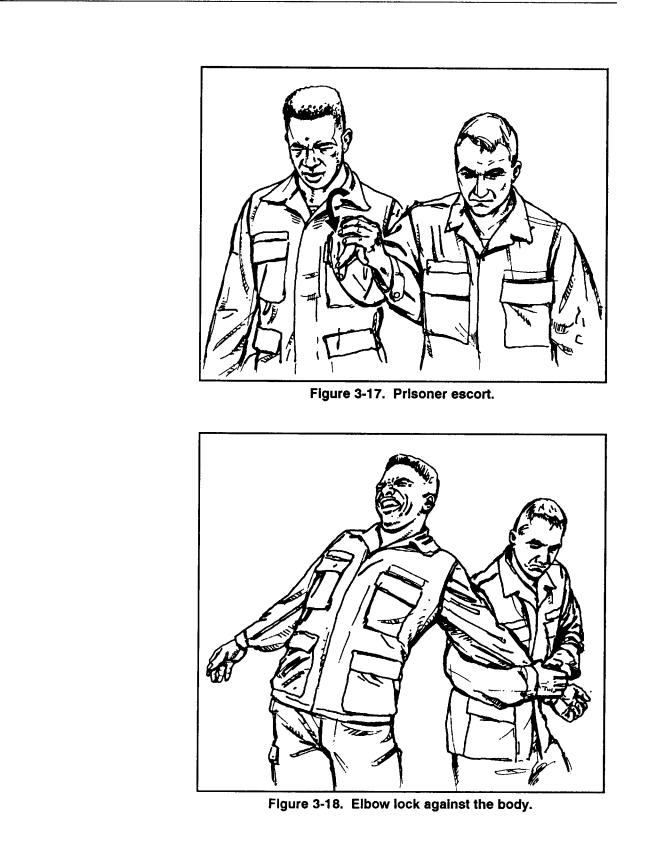
FM 21-150
c. Prisoner Escort. The escort secures the prisoner’s arm with the wrist bent straight back upon itself, palm toward the elbow. The prisoner’s elbow can be secured in the crook of the escort’s elbow, firmly against the escort’s body for the most control (Figure 3-17). This technique is most effective with two escorts, each holding a wrist of the prisoner. Use this technique to secure the opponent only if rope, flex cuffs, or handcuffs are unavailable.
d. Elbow Lock Against
the Body. The opponent’s elbow can be locked against the side of the body (Figure 3-18) by the defender. The defender turns his body to force the elbow into a position in which it was not designed to move. He can apply leverage on the opponent’s wrist to gain control since the lock causes intense pain. The elbow can easily be broken to make the arm ineffective. This movement must be executed with maximum speed and force.
3-25
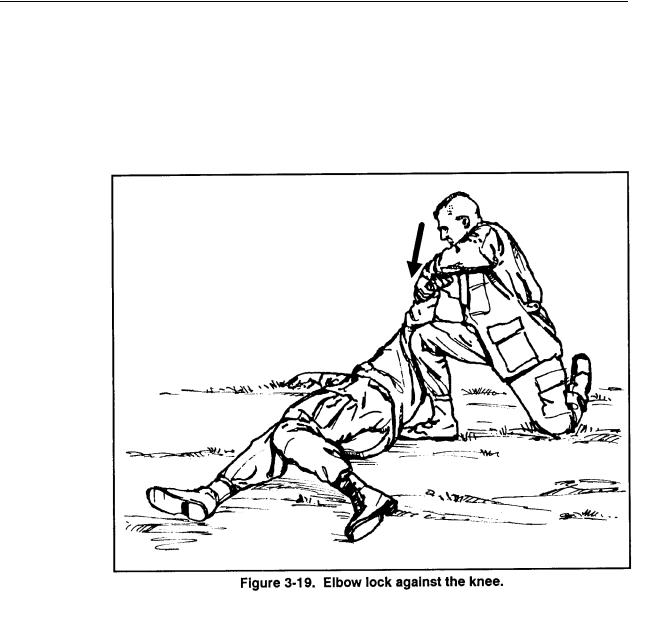
FM 21-150
e. Elbow Lock Against the Knee. While grappling on the ground, a defender can gain control of the situation if he can use an elbow lock (Figure 3-19) against the opponent. He uses his knee as a fulcrum for leverage to break his opponent’s arm at the elbow. Once the arm breaks, the defender must be prepared with a follow-up technique.
3-26
